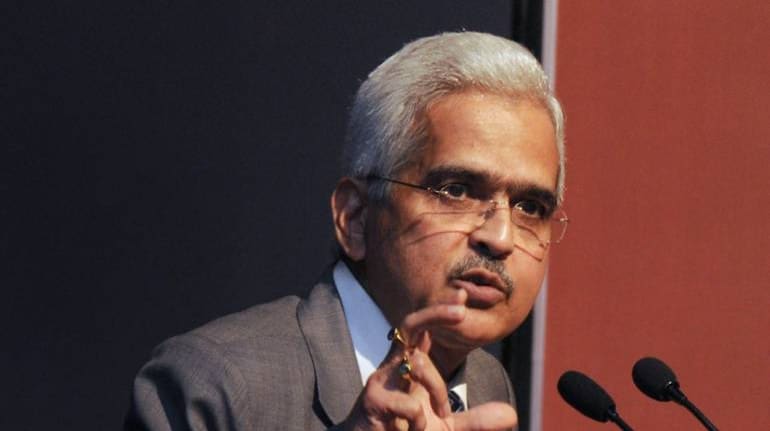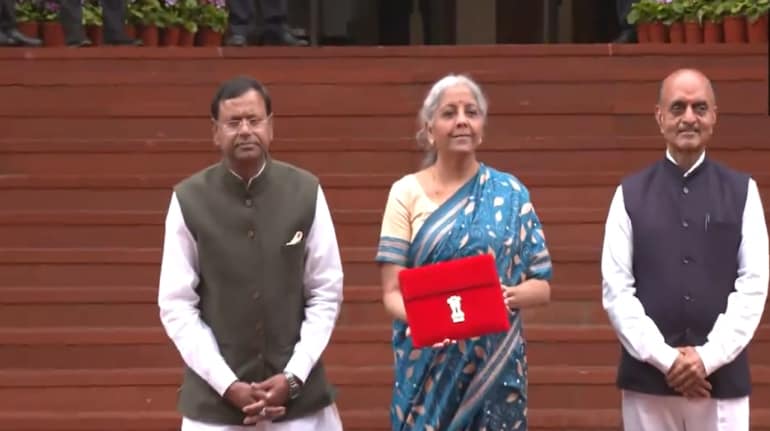
File Photo of RBI Governor Shaktikanta Das
Reserve Bank of India (RBI) Governor Shaktikanta Das on July 15 said stakeholders in the financial system should be capable to effectively address risks of mis-selling, cyber-security and data privacy to promote trust among customers.
Also, there is a need for accelerated universal reach of bank accounts along with access to financial products relating to credit, investment, insurance and pension, the governor said while addressing the Economic Times Financial Inclusion Summit.
"It is the responsibility of all stakeholders to ensure that the financial ecosystem, including the digital medium, is inclusive and capable of effectively addressing risks like mis-selling, cyber security, data privacy and promoting trust in the financial system through appropriate financial education and awareness," Das said.
Das' comments assume significance against the backdrop of rising instances of fraud in the banking sector including in the digital channels. Further, the governor also stressed the need for an effective grievance redressal mechanism.
Das said in order to make the post-pandemic recovery more inclusive and sustainable, financial inclusion would continue to be the central bank’s policy priority. Financial inclusion is the process of expanding formal banking services to unbanked sections of the society.
Das, referring a recent consultative paper on microfinance said the primary objective is to address the concerns relating to over-indebtedness of microfinance borrowers, enable a market mechanism to rationalise the interest rates and empower the borrowers to make an informed decision by enhancing transparency of loan pricing.
The RBI, in the consultative paper, had proposed removing the existing interest margin cap on microfinance loans and removal of a rule that only two MFIs can lend to same borrower. MFIs are firms that source money from banks and on-lend to low-income groups.
The RBI instead suggested a household income limits to assess the overall indebtedness of the borrower. According to the proposal, the payment of interest and repayment of principal on all outstanding loans of the households at any point of time shall be capped at 50 per cent of household income.
But, industry officials had expressed concerns that assessing the income levels of households could be tough as borrowers of MFIs are typically low-income borrowers drawing daily wages, which makes evaluation of income difficult. Also, there is a possibility that filed officers may show inflated income which will again lead to over-indebtedness, experts had opined.
To address this problem, the MFI industry lobby may work to form some kind of benchmark based on region or occupation of borrowers to make the income assessment as well as measuring the indebtedness level easier for the filed staff, said P Satish, Executive Director of Microfinance Industry lobby, Sa-Dhan to Moneycontrol on 13 July.
Das said lessons from the past and experiences gained during the COVID-19 pandemic clearly indicate that financial inclusion and inclusive growth reinforce financial stability.
“Greater financial literacy and education, together with sound consumer protection mechanisms will ensure that people at the bottom of the pyramid are empowered to take informed financial decisions,” Das said. Further, this will also enable banks, NBFCs, MFIs, etc. to enhance their customer base and products and diversify their balance sheet, Das said.
The pandemic has accelerated the push towards digitalisation with greater adoption of digital payments, the governor said, adding it is important to take steps to converge greater digitalisation with goals of financial inclusion. Das said payments systems are increasingly being recognised as a means of achieving financial inclusion and ensuring that economic benefits reach the bottom of the pyramid.
“ To give an example, the number of Prepaid Payment Instruments (PPI) increased at a compounded annual growth rate (CAGR) of 53 per cent from 41 crore in May 2017 to 226 crore in May 2021,” Das said.
Das said the second wave of the pandemic has taken a grievous toll both in terms of lives and livelihood. The recovery that had commenced in the second half of 2020-21 was dented by the second wave of the pandemic in April-May 2021, Das said.
To counter the adverse impacts of the pandemic in the economy, the RBI announced several measures including a slew of liquidity measures targeting different sectors.
These measures include lowering of policy rate, launching of on-tap liquidity schemes and channelising of liquidity through All India Financial Institutions and facilitating financial institutions to resolve stressed loans to individuals, small business and MSMEs, Das said.
Further, the RBI allowed PSL (priority sector lending) classification for bank loans to NBFCs for on-lending and PSL classification for loans from small finance banks (SFBs) to micro finance institutions (MFIs) for on-lending were additional measures taken to promote credit flow to affected sectors.
Also, the RBI offered a six month loan moratorium facility which was followed up by a provision for one-time loan restructuring for stressed borrowers. These measures significantly helped to mitigate the impact of Covid among the economically weaker sections.
Stakeholders should be capable to address risks of mis-selling and cyber security, says RBI governor - Moneycontrol
Read More

No comments:
Post a Comment